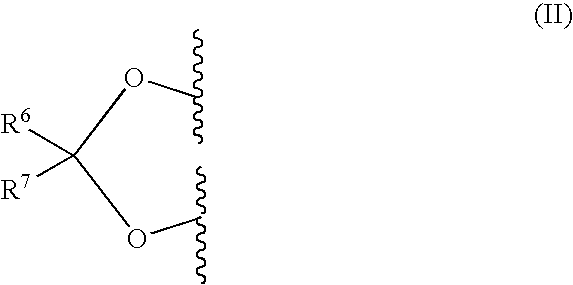Co-Therapy for the Treatment of Migraine Comprising Anticonvulsant Derivatives and Anti-Migraine Agents
a technology of anti-migraine agent and co-therapy, which is applied in the direction of biocide, heterocyclic compound active ingredients, drug compositions, etc., can solve the problems of inability to achieve high dosages, inability to achieve long-term effects, so as to achieve treatment and/or prevention of migraine, the effect of preventing and treating migrain
- Summary
- Abstract
- Description
- Claims
- Application Information
AI Technical Summary
Benefits of technology
Problems solved by technology
Method used
Image
Examples
case study 1
[0085] The patient was a female, age 15, with persistent daily headache with migraine features. Standard neurological workup including MRI scan was normal. The patient failed to respond to PERIACTIN (cyproheptadine HCl), nortriptyline and INDERAL (propranolol HCl). Her severe headaches did however respond to naratriptan. The patient was started on topiramate at 25 mg / daily, increasing to 75 mg / day with a significant improvement and resolution of the daily headaches; and a decrease in migraine headache frequency to approximately one per week. The improvement was noted with treatment including topiramate at a dosage level of 75 mg / day and INDERAL at 20 mg / day.
case study 2
[0086] The patient was a male, age 41, with a lifelong history of refractory migraine (migraine without aura), averaging 8 migraines per month. The patient showed no response to CORGARD (nadolol) in combination with PROZAC (fluoxetine HCl) or CELEXA (citalopram HCl) or trazodone. Supplementation with riboflavin (vitamin B2) at 400 mg / day also resulted in no improvement. The patient was started on topiramate at 25 mg / day, with dosage increasing to 75 mg / day. Simultaneously, the beta-blocker, CORGARD dosage was decreased to 20 mg / day, with CELEXA at 20 mg / day also continued. At 75 mg / day topiramate, 20 mg / day CORGARD and 20 mg / day CELEXA, the patient reported a significant decrease in headache frequency, with no headache for up to four weeks.
case study 3
[0087] The patient was a female, age 51, with a twenty-year history of severe refractory migraine with and without aura. The patient had modest symptomatic response to DEPAKOTE (valproic acid), which was discontinued due to weight gain. Only modest response was reported with INDERAL at 120 mg / day in combination with tricyclic antidepressants; while symptomatic response was reported to repeated frequent use of sumatriptan. The patient was started on topiramate at 50 mg / day increasing to 100 mg in the morning and 100 mg in the evening, in combination with INDERAL at 160 mg / day. The patient reported initial positive response, but the headaches broke through. After about 6 months, the patient was prescribed EFFEXOR XR (vanlafaxine HCl) at 37 mg / day, an increased topiramate dose of 125 mg in the morning and 150 mg in the evening, and 160 mg / day INDERAL. Modest but sustained improvement was reported with this combination.
Clinical Protocol Study Trials #1 and #2
Double-Blind, Placebo-Cont...
PUM
| Property | Measurement | Unit |
|---|---|---|
| temperature | aaaaa | aaaaa |
| temperature | aaaaa | aaaaa |
| temperature | aaaaa | aaaaa |
Abstract
Description
Claims
Application Information
 Login to View More
Login to View More - R&D
- Intellectual Property
- Life Sciences
- Materials
- Tech Scout
- Unparalleled Data Quality
- Higher Quality Content
- 60% Fewer Hallucinations
Browse by: Latest US Patents, China's latest patents, Technical Efficacy Thesaurus, Application Domain, Technology Topic, Popular Technical Reports.
© 2025 PatSnap. All rights reserved.Legal|Privacy policy|Modern Slavery Act Transparency Statement|Sitemap|About US| Contact US: help@patsnap.com



